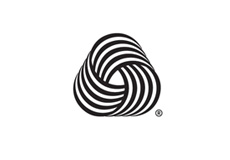Comments (0)

The world of symbols
The ornaments on the Far Eastern carpet have two main meanings: they are decorative as well as symbolic. Every man, whether he is a carpet expert or an average user at a glance, perceives their colour or design and the symmetry of the composition.However, in order to understand the true meaning of a particular carpet, if you are a common user, you are welcome to read the article below.
Every Persian carpet having a pattern has a concept, a hidden meaning, and speaks in its own, rich language.There is a whole world of symbols, together with the richness of their meanings and connections with the history, culture or religion of the people. There are a number of notions hidden in the form of various signs on the carpet. Iconography is associated with carpets from the very beginning of carpets weaving. Each ornament on the carpet in its conception is to perform the form of message to the recipient - that is the user of the carpet. They bring us to the world of culture, philosophy and aesthetics of far-eastern civilizations, even more as the current Persian carpets are based on ancient specimens from those regions. Despite the diversity of cultures - Persian, Caucasian or Turkish, the symbols are identical. Most of the symbols refer to ancient pagan beliefs and have mystical or magical or religious significance (for example, the borders on a Bucharan carpet symbolize the gates of paradise). From the beginning, they were repeated on products from different regions.
Types of symbols
Eastern cultures have attributed some charitable magic to some animals, so many of the areas have favourite zoomorphic motifs. Most often are the images of an eagle, a rooster, or a peacock (birds were considered to be earth and sky connectors). Hunting scenes have also often appeared as well as other scenes involving animals - such as rams on gabbeh carpets. In ancient Chinese culture the dragons were of great importance, so they were also applied to products from there.
Cashmere carpets, for example, have stylized palms - a reference to the plant motif. This motif is most often used and takes on various forms. It is contained in practically every part of the carpet - as well as in the border (main border) or in the form of a floral medallion. They take up forms of herat, rosette, palmet, creeper and many others as for example in the carpet under the form of flowers in the central part or a flower vase. The motif of the tree of life is another that should be separately mentioned - Asian cultures practiced cultivating the plants, and the plants themselves were given the power of magic. Therefore, the images of the tree of life were used very often.
Another type of decorations are the geometric motifs present on Anatolian and Caucasian carpets. Among them the most important and most significant for the Persian people should be discussed:
- The motif of the swastika, which is one of the most frequently, repeated ancient patterns. It has been spread by Nomads and is deeply associated with religion and beliefs,
- The theme of the Temple of Fire,
- The motifs of a hand and niches present, among others, on the prayer books of the Beluga people,
- The motif of the four triangle diamonds - symbolizing the number 4, which according to ancient cultures meant elements (fire, air, water and earth) or four seasons and four weeks a month. This motif often appears as a medallion of four triangles,
- Gul motif - most commonly seen on Persian carpets of Tekke, Jomud and carpets from the regions of Turkestan.
- Motif of an axe- this icon of a two-bladed combat tool expressed the power of the material from which it was made, as well as represented the face of power.
Each Far East carpet has its own design so that you can assign a carpet to the region from which it originates. On each carpet, you will see the characteristics of the city or country of origin.At times symbolism is also color-coded as on the monochromatic goods produced by people of Beluga.
The subject of symbolism of carpets is very extensive and it would be difficult to describe it in a book, so in a short article is quite impossible, so, if you are interested, we encourage you to obtain the knowledge from different sources, because it is worth knowing the origin of your carpet.














